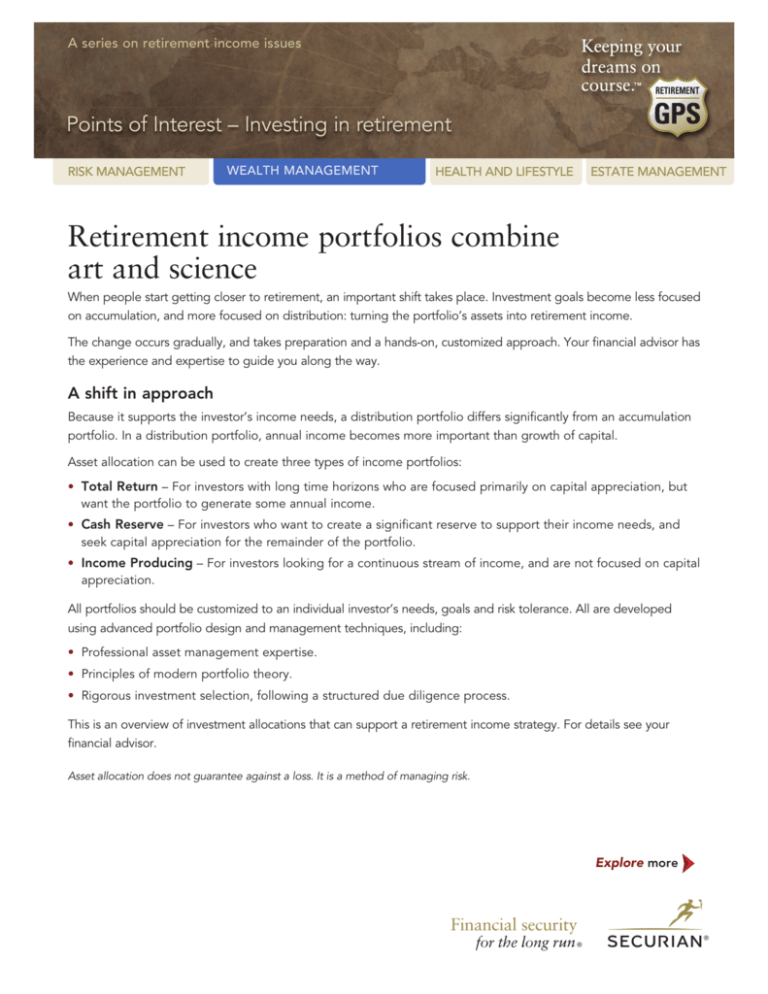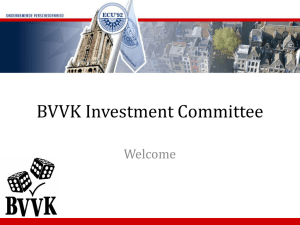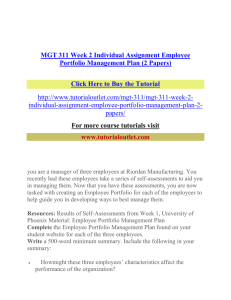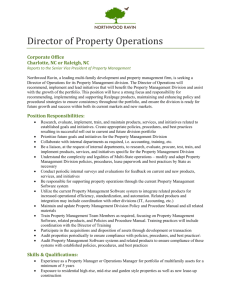
A series on retirement income issues
RETIREMENT
RETIREMENT
Points of Interest – Investing in retirement
Risk Management
WealthHealth
Management
and Lifestyle
Estate Management
Retirement income portfolios combine
art and science
When people start getting closer to retirement, an important shift takes place. Investment goals become less focused
on accumulation, and more focused on distribution: turning the portfolio’s assets into retirement income.
The change occurs gradually, and takes preparation and a hands-on, customized approach. Your financial advisor has
the experience and expertise to guide you along the way.
A shift in approach
Because it supports the investor’s income needs, a distribution portfolio differs significantly from an accumulation
portfolio. In a distribution portfolio, annual income becomes more important than growth of capital.
Asset allocation can be used to create three types of income portfolios:
• Total Return – For investors with long time horizons who are focused primarily on capital appreciation, but
want the portfolio to generate some annual income.
• Cash Reserve – For investors who want to create a significant reserve to support their income needs, and
seek capital appreciation for the remainder of the portfolio.
• Income Producing – For investors looking for a continuous stream of income, and are not focused on capital
appreciation.
All portfolios should be customized to an individual investor’s needs, goals and risk tolerance. All are developed
using advanced portfolio design and management techniques, including:
• Professional asset management expertise.
• Principles of modern portfolio theory.
• Rigorous investment selection, following a structured due diligence process.
This is an overview of investment allocations that can support a retirement income strategy. For details see your
financial advisor.
Asset allocation does not guarantee against a loss. It is a method of managing risk.
Explore more
hij abc
Total Return Portfolio
The Total Return portfolio is for investors who seek capital appreciation and are willing to tolerate a higher level
of portfolio volatility.
These portfolios are very similar to a pre-retirement portfolio, with a segment of cash designated to provide the
investor with one year of income.
Benefits
• Simple transition to retirement portfolio.
• Potential for capital appreciation to help meet future discretionary spending goals, such as charitable
contributions, gifts, support for family members and a financial legacy for heirs and loved ones.
• Potential to keep up with inflation and maintain purchasing power for non-discretionary spending.
• Highest return potential of the three distribution portfolios.
Risks
• Heightened exposure to market volatility.
• Only changes to the portfolio are to accommodate investor’s short-term liquidity needs.
• Portfolio model is less predictable for cash-flow forecasting.
• Unplanned withdrawals could significantly affect the portfolio’s principal.
• Investments in fixed income securities are affected by the creditworthiness of the issuers and by interest
rate risk. The value of fixed income and real estate investments will fall as interest rates rise.
• Investments will fluctuate and may be worth more or less than when originally invested.
Total Return Portfolio
Fixed
income
Dividend and interest income
Equities
Cash
$
Cash withdrawal
Investor’s annual
cash needs
Segmented cash assets = Investor’s annual cash needs minus dividends and interest
Year 1
cash assets
Dividend and interest income, supplemented by cash assets, meet the investor’s annual
cash needs. Assets equal to one year of cash needs are segmented in the portfolio, and
annually replenished during portfolio rebalancing.
Cash Reserve Portfolio
The Cash Reserve portfolio typically includes asset buckets or pools with durations that match three to five
years of the investor’s cash needs. The remainder of the portfolio seeks capital appreciation with a lower level
of portfolio volatility. The portfolio’s asset buckets/pools give the investor greater flexibility during market
downturns, and insulates against the need to sell assets in a down market.
Benefits
• A significant portion of the portfolio remains invested for capital appreciation, which can help support goals
such as charitable contributions, gifts, support for family members, and a financial legacy for heirs and loved
ones.
• The portion of the portfolio invested for capital appreciation provides potential to keep up with inflation
and maintain purchasing power for non-discretionary spending.
• A liquidity “cushion” lowers the likelihood the investor will have to sell investments into a down market.
• Mild transition from pre-retirement to retirement portfolios.
Risks
• Assets invested for capital appreciation are exposed to market risk.
• In an extended period of weak or negative equity performance, cash buckets could be drawn down.
• Cash buckets are exposed to interest rate risk when replaced. Rates could potentially be lower than when
originally invested.
• Portfolio model offers limited predictability for forecasting models.
• Investments in fixed income securities are affected by the creditworthiness of the issuers and by interest
rate risk. The value of fixed income and real estate investments will fall as interest rates rise.
• Investments will fluctuate and may be worth more or less than when originally invested.
Cash Reserve Portfolio
Fixed
income
Dividend and interest income
Equities
Cash
$
Cash withdrawal
Investor’s annual
cash needs
Segmented cash assets = Investor’s annual cash needs minus dividends and interest
Year 1
cash assets
Year 2
cash assets
Year 3
cash assets
Year 4
cash assets
In the Cash Reserve portfolio, three-five years of cash assets are segmented. When the cash assets
for Year One are used, they’re replenished with the cash assets for Year Two, and so on. Segmenting
multiple years of cash increases the likelihood that positive investment performance will provide an
opportunity to replenish cash segments, and decreases the likelihood an investor will resort to selling
in a down market.
Income Producing Portfolio
The Income Producing portfolio is constructed around income-producing assets that sync with the investor’s
retirement income needs. It is appropriate for investors whose primary goal is to maximize income.
Income Producing portfolios apply the principles of prudent risk-management and modern portfolio theory to
the goal of generating current income. The investor’s pre-retirement portfolio typically undergoes a significant
overhaul to generate dividends and interest sufficient to meet the investor’s yearly cash requirements.
Benefits
• Aligns portfolio with investor’s liquidity requirements.
• Lower volatility than capital appreciation portfolios.
• Greater predictability with forecasting models.
• Portfolio less susceptible to drastic alterations that can result from unplanned withdrawals.
Risks
• May require significant modification to pre-retirement portfolio.
• Less likely to achieve inflation-adjusted principal growth.
• After-tax returns may be lower than portfolios focused on capital appreciation.
• Potentially significant reinvestment risk during periods of declining interest rates.
• Investments in fixed income securities are affected by the creditworthiness of the issuers and by interest
rate risk. The value of fixed income and real estate investments will fall as interest rates rise.
• Investments will fluctuate and may be worth more or less than when originally invested.
Income Producing Portfolio
Equities
Cash
Fixed
income
Dividend and interest income
$
Investor’s annual
cash needs
The Income Producing Portfolio is structured around income producing investments that
generate sufficient current income to meet the investor’s needs.
Your financial advisor can help make your shift from accumulation to income a smooth one. Visit with
your advisor now and start discussing your retirement income portfolio now.
Securian Financial Group, Inc.
www.securian.com
Securities offered through Securian Financial Services, Inc. Member FINRA/SIPC.
400 Robert Street North, St. Paul, MN 55101-2098 • 1.800.820.4205
©2009 Securian Financial Group, Inc. All rights reserved.
F71432-4 2-2010 DOFU 2-2010
A00030-0110
hij abc









